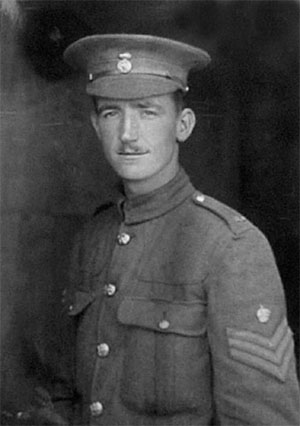Frederick Barter facts for kids
Quick facts for kids
Frederick Barter
|
|
|---|---|
 |
|
| Born | 17 January 1891 Cardiff, Glamorganshire, Wales |
| Died | 15 May 1952 (aged 61) Poole, Dorset, England |
| Allegiance | |
| Service/ |
|
| Rank | Captain |
| Unit | The Royal Welch Fusiliers |
| Battles/wars | World War I |
| Awards | Military Cross Cross of St. George (Russia) |
Frederick Barter was a very brave Welsh soldier. He received the Victoria Cross (VC) and the Military Cross (MC). The Victoria Cross is the highest award for courage given to soldiers in Britain and the Commonwealth. It is given for incredible bravery when facing the enemy.
Frederick Barter was born in Cardiff, Wales, on January 17, 1891. When World War I began, he was 24 years old. He served in the British Army as a Company Sergeant-Major with The Royal Welch Fusiliers.
Contents
Earning the Victoria Cross
In May 1915, during a battle in Festubert, France, Sergeant-Major Barter showed amazing courage. He was already in the first line of German trenches. He needed to make his army's line longer, so he asked for volunteers. Eight soldiers bravely stepped forward to help him.
With these eight men, he attacked the German position using bombs. They managed to capture three German officers and 102 German soldiers. They also took control of 500 yards of the enemy's trenches. After this, he found and cut 11 of the enemy's mine leads. These were wires that could set off explosives.
Later Service and Awards
After his heroic actions, Frederick Barter was promoted. In August 1915, he became a Second Lieutenant in The Royal Welch Fusiliers.
The Military Cross
He later joined the Indian Army in 1917. He was awarded the Military Cross in July 1918 for another act of bravery. The award was given for his outstanding courage and dedication.
His citation, which is the official reason for the award, explained his actions. He was ordered to attack the enemy from the side. He led his two platoons (small groups of soldiers) up a very steep hill. This allowed them to get behind the enemy. He then placed one platoon with two machine guns to block the enemy's escape route. With the other platoon, he bravely attacked the enemy from behind and the side. Because of his actions, almost all of the enemy soldiers were killed or captured.
Frederick Barter was promoted to Captain in May 1920. He retired from the Indian Army in November 1922. He passed away on May 15, 1952.
Where to See His Medal
Frederick Barter's Victoria Cross medal is on display for everyone to see. You can find it at the Royal Welch Fusiliers Museum. This museum is located at Caernarfon Castle in Wales.

